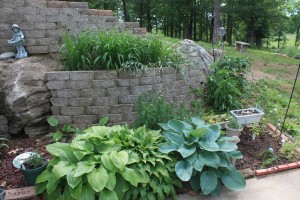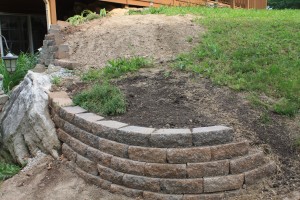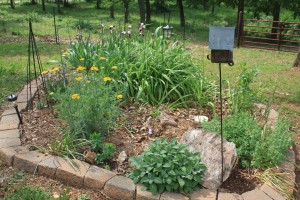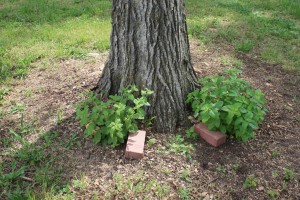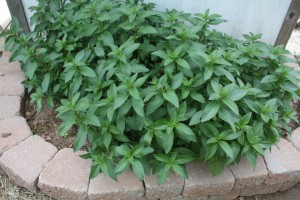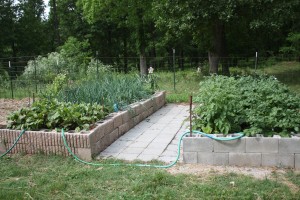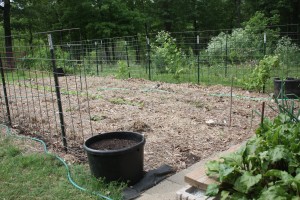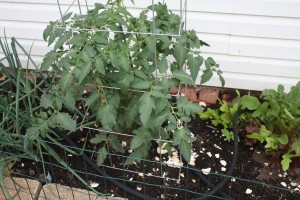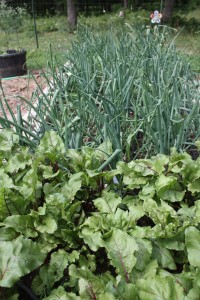This little distinct yellow flower (dandelion, taraxacum officinale) with its tooth shape leaves is usually consider a pest, a weed, a nuisance, but in the herb world, it is considered an herb. Dandelion has a flat daisy like bright yellow flower with bright green leaves and a huge, fleshly taproot.
When you want to take a picture of dandelion don’t wait until after the lawn is mowed, which is what I did, so I had to find a part of my garden that needed weeding.
History: In the 7th century it was mentioned in Chinese herbals and in Europe it appeared in the 15th century when a surgeon compared the leaves to the teeth of a lion and coin the name of the plant which came from French dents de lion. In the 16th century, dandelion was known as Herba urinaria because of the strong diuretic effect.
Dandelion was brought to the new world by the early colonists. Some of the common names include fairy clock, blowball, piss-a-bed, lion’s teeth, priest crown, puffball, white endive and swine snout. According to some experts, dandelion was the first green food Adam ate, after he was banished from the Garden of Eden.
When you were a kid you properly blew the round seed heads to watch the seeds fly, which is one of the reason dandelion is so prevalent. Believe it or not but some people actually grow dandelion in their garden as an herb and salad green. The whole plant can be used from the flower to the root.
Growing: Dandelion grows in cool to warm climates and like rainfall with full sun. If you look around you and find the plant it usually grows in any kind of soil, but the better the soil the less bitter the leaves of the herb. In the early spring dandelion is more prevalent than in the hot sun.
The roots will grow extremely deep and if you allow the seed heads to develop they can become an invasive weed.
Harvest: Fresh spring leaves can be picked when they first start to grow and are young. The older the leaves the taste can become very bitter. To help reduce the bitter taste, soak the leaves in water mixed with salt, or sauté the leaves in oil. The leaves are better fresh rather than dried.
The roots can be dug up and roasted or dried to use in a variety of ways. For lasting freshness store the roots in the freezer like you would fresh coffee.
To make the dandelion “coffee”: Use either dandelion or chicory root. Wash the root carefully, try not to damage the roots, and spread out on a large cookie sheet and place in the oven at 180 to 200 degrees F. for up to four hours. Turn the roots to ensure even and consistent drying. When the roots are completely dry and cool, store them and grind fresh each time you make a cup of “coffee”. Some like to mix half and half, half coffee and half dandelion roots. One level teaspoon per cup.
As a Dye: The whole plant will dye wool a magenta color and the flowers can be used to make yellow.
Culinary: Add the spring leaves to garden salads and smoothies for cleansing and for diuretic action. The roots which are cleaned, chopped and roasted until dark brown, are ground and used as a healthy caffeine-free coffee substitute. Dandelion coffee has the opposite effect of caffeine coffee. Use the flowers in jelly, beer and homemade wine. Try adding dandelion greens when cooking green beans.
Medicinal: As an herbal medicine, dandelion root has been held in high esteem in Europe for centuries. Folklore has using the sticky white sap of the dandelion to remove warts. Dandelion root coffee is known to help with sleep and is good tonic for the kidneys and liver. It is considered cool, bitter, and sweet. Dandelion contains vitamins A, B, C, D, potassium salts, iron, thiamine, niacin, calcium, sodium, pectin and carotenoids.
The roots will promote bile flow and is mildly laxative. As a diuretic, the leaves are high in potassium. Because of this potassium content it is said to be good tonic for the heart as well. The whole herb is used to clear heat and toxins from the blood and used for boils and abscesses.
The root can be made into a tincture or a decoction. Dandelion helps to remove poisons from the body and is known to be good for diabetics and for someone suffering from anemia. It is considered a natural spring tonic for the liver and gallbladder. Dandelion is considered a good blood cleanser and especially in cases of skin diseases. Dandelion makes a good digestive tonic for constipation.
When searching for medicinal recipes using dandelion, many of the recipes will include other herbs. A blood builder recipe mixes equal parts each of dried comfrey, fenugreek seed, along with dandelion. Dandelion sleep remedy contained equal parts of dandelion root, chamomile, and valerian.
For the above recipes, steep one heaping teaspoon of herbs per cup of boiling water for 10-20 minutes, strain and drink with lemon and honey.
So is dandelion an herb or a weed, well it depends on what you plan on using it for. If you want the perfect lawn, then dandelion is a weed, if you want to improve your health by making tinctures, dandelion teas, adding to salads, making jelly or many of the other uses culinary and medicinal then dandelion is an herb.


